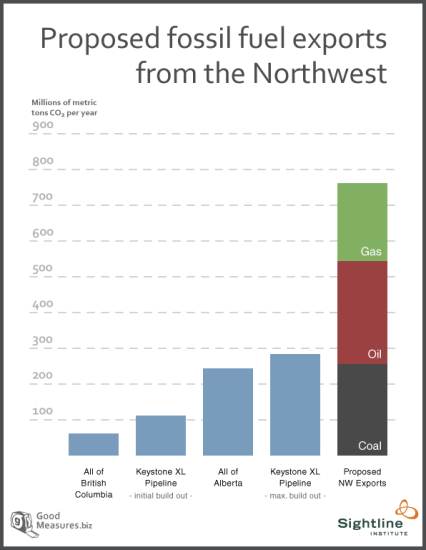In British Columbia’s provincial elections yesterday, the right-of-center Liberal party pulled off an astonishing upset to hang onto power. It was an election in which the politics of fossil fuel expansion played a meaningful role, particularly for the NDP, the major opposition party. With the Liberals forming another majority government, it makes sense now to reflect on the epic-scale fossil fuel exports planned for BC and its neighbors in the US Northwest.
Today, Sightline is releasing a new report in Canada, one that tallies the potential carbon emissions from fossil fuel export infrastructure planned throughout the Pacific Northwest.
Across British Columbia, Oregon, and Washington there are active proposals for seven new or expanded coal terminals, three new oil pipelines, and six new natural gas pipelines. The projects are distinct, but they can be denominated in a common currency: the tons of carbon dioxide emitted if the fossil fuels were burned. Taken together, these projects would be capable of delivering enough fuel to release an additional 761 million metric tons of carbon-dioxide.
The Northwest enjoys a reputation for leadership in clean energy and environmental policy. Yet the new fossil fuel infrastructure planned for British Columbia, Oregon, and Washington would eclipse the region’s green reputation, transforming the Northwest from an aspiring climate leader into a carbon export hub of global consequence.
You can find the full report here.
[Editor’s note: At the Vancouver Sun, Pete McMartin devoted his May 18 column to Sightline’s report. His piece is well worth reading.]
Sightline will be releasing a US version of this report soon, so American readers should keep their eyes peeled.



Comments are closed.